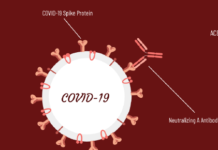
by Dallas Adams and Chase Kessel; Farnsley Middle School (Louisville, KY)
Teacher: Marsha Buerger
“My hands hurt.”
In 1997, Jody Kessel was diagnosed with Carpal Tunnel Syndrome. Chase (co-author) started noticing that his aunt’s hands would start moving in a weird way at times.
Kessel no longer has a typing job because of her condition. “I was very sad when I lost my job, and it has affected my life in many ways,” she stated.
According to the Mayo Clinic, carpal tunnel syndrome is a hand and arm condition that causes numbness. It is caused by a pinched nerve in your wrist that occurs when too much pressure is applied to a nerve. Tissues, such as bones, muscles or tendons, surround the nerve and the pressure disrupts the nerve’s function, which then causes pain, tingling and weakness.
According to The National Institute of Neurological Disorder (NIND), carpal tunnel syndrome has been associated with certain tasks including, repetitive hand motions, awkward hand motions, strong gripping, mechanical stress on the palm, and vibration. The jobs that most often show signs of carpal tunnel syndrome are cashiers, hairdressers, knitters, or sewers. Other jobs that could show signs of the syndrome include mechanic, gardener, painter, homemaker, and janitor.
According to the Mayo Clinic, symptoms usually develop over time, with frequent burning, tingling, itching, or numbness in the palm of the hand and fingers—especially the thumb, the index, and middle fingers. Some people with carpal tunnel syndrome say their fingers feel useless and swollen, even though little or no swelling happens. The symptoms often will start in either one or both of the hands during the night. A person with carpal tunnel syndrome may wake up feeling the need to shake their hand or wrist. As symptoms worsen, people might feel tingling during the day.
Kessel’s symptoms developed over time. She first noticed burning and tingling and then her fingers began to hurt a lot more. Kessel states, “My fingers did hurt very badly but I was able to still move them.”
According to Mayo Clinic, treatments can range from rest and ice to cortisone injections or surgery. If you don’t catch carpal tunnel syndrome in the early stages, it will start to get worse over time and can require surgery or other treatments. If you do catch it in the early stages, you can help treat it with some rest or some cold ice on the nerve. Stretching is also another way to treat carpal tunnel syndrome while you are at home.
According to Honor Society of Nursing, carpal tunnel syndrome is not life threatening, but it can affect your daily life. Carpal tunnel syndrome can be debilitating, however with treatment it may be easier to deal with. Since Kessel has had it since 1997, she has been suffering for a very long time.
Kessel is doing much better today and she is learning how to handle having carpal tunnel syndrome. She has been treating it with a wrist support, ice, and rest. If it continues to get worse though, she may have to get surgery.
“It is hard living with Carpal Tunnel Syndrome, but I have gotten used to it.” Kessel is currently working again, but still has to manage the pain she feels with increased activity.

This work is licensed under a Creative Commons Attribution-NonCommercial-NoDerivs 3.0 Unported License













